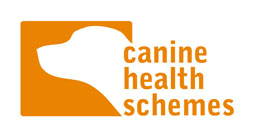Standing up for the veterinary profession
08 Aug 2024
16 Nov 2016 | Shirley Dent
I recently met Dr Terry Grimes – one of the original panellists when the Eye Scheme was set up by BVA, the Kennel Club and the International Sheep Dog Society in 1966.
 I recently met Dr Terry Grimes – one of the original panellists when the Eye Scheme was set up by BVA, the Kennel Club and the International Sheep Dog Society in 1966.
I recently met Dr Terry Grimes – one of the original panellists when the Eye Scheme was set up by BVA, the Kennel Club and the International Sheep Dog Society in 1966.
Terry Grimes’ 50 years’ experience as a veterinary ophthalmologist has taught him a thing or two. He has seen immense change over the many years he has talked to and engaged with owners:
“Sure as eggs, education has changed as far as owners are concerned. Everyone has at least one computer and are constantly ‘googling up’ to pose unanswerable questions to their veterinary advisors. However, one of the main functions undertaken by members of the eye-testing scheme panel is the education of their clients, giving advice, pointing to further information and interpreting that information. And that usually involves genetic counselling of one sort or the other – in other words would I advise you to breed from this animal. Owners and breeders are a lot more informed now than they were in the past.”
Terry has also seen critical changes in the tools and techniques available to veterinary ophthalmology, “The technology has certainly changed. We use techniques which are very similar to these used in human ophthalmology, so most of the instrumentation we use is immediately recognisable to medical examiners.”
Terry explains that most examinations will involve using a mydriatic drug to dilate the dog’s pupils and make the back of the eyes easier to see, “Most people would use magnification and an oblique light source and the examination would be conducted in a darkened area, so I have a dimmer switch in my consulting room so I can leave a bit of background light so the owner doesn’t trip over anything or come to any mischief!”
Using a slit lamp – one of the instruments that radically improved the practice of veterinary ophthalmology – a very intense beam of light is projected onto the surface of the eye and the beam is narrowed to examine the cornea and anterior chamber and the lens. Terry points out that using this instrument with the pupil dilated means “you can examine virtually 100% of these structures”. The examination then moves on to look at the back of the eye, the retina and the optic nerve head using an opthalmoscope, which is an instrument with a series of lenses incorporated in it which brings into sharp focus parts of the back of the eyes.
Terry explains that “Having built up a picture of that animal’s eye and hopefully picked up any abnormalities, then the real trick is to diagnose what the abnormality is and, importantly for this scheme, why it is there. Because the objective of the eye-testing scheme is to pick out those conditions that can be passed on from generation to generation.”
For Terry one of the biggest advances in veterinary ophthalmology are the specialist skills and expertise of panellists, “Many panellists who now operate have undertaken years of further specialist education and have acquired academic qualifications in veterinary ophthalmology. These qualifications were not available in the earlier days and to the individuals who formed the panel of the time. The standards that panellists can reach today is a reflection not just of the specialist education available but also of the dedication and diligence of people who undertake this work.”
 But however hi-tech veterinary ophthalmology gets, there are some things about the job and working in the field that don’t change and can still be a challenge for vets.
But however hi-tech veterinary ophthalmology gets, there are some things about the job and working in the field that don’t change and can still be a challenge for vets.
“Examining working sheepdogs can be a fairly hairy-chested undertaking. The ground can be frozen and the facilities that are available can be non-existent. And there will be queues of men and dogs waiting in sodden circumstances for their turn to be examined. “
And Terry still has memories of some of the more painful lessons learnt out in the field.
“A sheepdog bit me on the top of my head. That wasn’t a regular occurrence. He must have been aiming at my bald spot. It was in fearful circumstances and surroundings in Ireland - the rain was coming down and I was performing this examination in a very small cattle truck and it was most uncomfortable. One takes what precautions are reasonable but it can happen in a flash of a second.”
With a career spanning academic and veterinary appointments from America to Zambia, Terry has a strong sense of perpetually learning from veterinary colleagues and of giving back to the profession.
“One’s memories go back to the individuals and it is the panellists, the people who were seniors in the days that I started that I remember, and again it is the personalities and their various attributes that come back to me - the kindness and tolerance they showed me was quite remarkable and one does try as much as possible to repay this.”
Get tailored news in your inbox and online, plus access to our journals, resources and support services, join the BVA.
Join Us Today